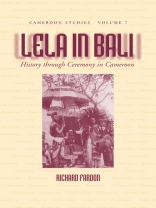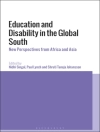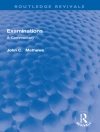Lela in Bali tells the story of an annual festival of eighteenth-century kingdoms in Northern Cameroon that was swept up in the migrations of marauding slave-raiders during the nineteenth century and carried south towards the coast. Lela was transformed first into a mounted durbar, like those of the Muslim states, before evolving in tandem with the German colonial project into a festival of arms. Reinterpreted by missionaries and post-colonial Cameroonians, Lela has become one of the most important of Cameroonian festivals and a crucial marker of identity within the state. Richard Fardon’s recuperation of two hundred years of history is an essential contribution not only to Cameroonian studies but also to the broader understanding of the evolution of African cultures.
Tabella dei contenuti
Map and Figures
Preface
Acknowledgements
Chapter 1. Lela: Past Present, Present Past
- Lela in the Early Post-Colony Bali
- Nyonga: A Thumbnail History
Chapter 2. Lela in 1908: The Photographic Record
- Lela and Voma in Bali
- The Ethnologist and the Missionaries
- Ankermann and the Missionaries
- Photographed: The Second Photographer
- The Texts and the Photographs
- An Inventory of the Photographic Record of the 1908 Lela
- Conclusion
Chapter 3. Lela: The Texts, 1890s to 1960s
- The Missionaries’ Version 1903 to 1913
- The Ethnologist’s Version 1907 to 1908
- The Soldier’s and Trader’s Versions 1889 to 1906
- Interlude: The Bali Axis Unravels
- The Anthropologist and the Historian: A 1960s Version
Chapter 4. Lela: Incorporation, Ascendancy and the Means of Violence
- The Ba’ni before the Germans T
- he Apogee of Germano–Bali Majesty: The 1905 Paramountcy
Chapter 5. Lela in the Grassfields and the ‘Graffi’ in Lela: Or, More is More
- The Importance of Origins
- More is More
- Lela Adopted in the Grassfields
- Lela and Voma in the Bali kingdoms
Chapter 6. Lela Precedents: Beyond and Before the Grassfields
- ‘Spear Washing’ in the Benue Chamba
- Chiefdoms: Flags, Gowns and Horses
- Adamawan Elements in Lela: Death, Killing and Commemoration
Chapter 7. Fast forward: From Adamawa to Late Post-Colonial Cameroon
References
- Published References
- Unpublished References
Circa l’autore
Richard Fardon, Professor of West African Anthropology in the University of London, is the author of four monographs on West Africa, as well as numerous works of anthropological theory. Since 1988 he has taught at the School of Oriental and African Studies, where he chaired the University of London’s Centre of African Studies for eight years. In addition to its obvious archival sources, this book draws upon ethnographic research he began in Nigeria (from 1976) and in Cameroon (from 1984). Richard Fardon has been editor of the journal AFRICA since 2001.












